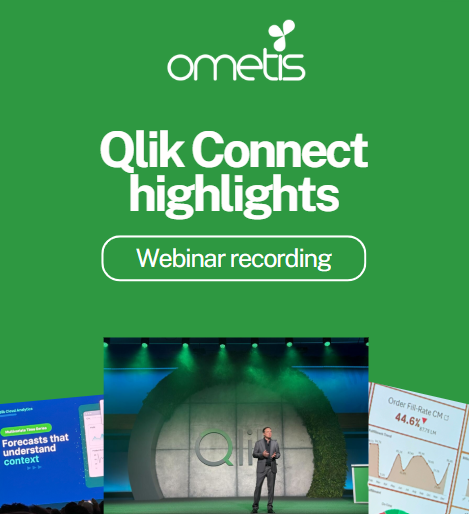From ad-hoc to strategic: A maturity model for AI/ML innovation
Our latest blog features an article by Kevin Petrie, Vice President of Research at BARC, the Business Application Research Centre. BARC is a leading analyst firm for data & analytics and enterprise software with a reputation for unbiased and trusted advice.
In his post Kevin takes us through some of the risks of AI/ML transformation.
.png?width=1920&height=1080&name=Kevin%20Petrie%20(3).png)
Artificial intelligence and machine learning present the opportunity to boost efficiency, foster creativity, and delight customers. But AI/ML transformation requires careful changes to business and technology processes. This blog offers a model to help business and technology leaders mature from ad hoc projects to standard systems and finally strategic innovation. As with teenage adolescence, achieving maturity involves asking hard questions about past decisions and actions.
We start by recognizing three risks of AI/ML innovation: shiny objects, technical debt, and disruption.
- Shiny objects. New technology is distracting. Shiny AI/ML models perform dazzling feats but can pull teams in unprofitable directions.
- Technical debt. Technical teams can make expedient short-term decisions that increase complexity and limit future innovation.
- Disruption. AI/ML projects introduce changes that can disrupt operations, business performance, or compliance standing.
Maturity Model for AI/ML Innovation

These risks run higher with less mature AI/ML initiatives. This brings us to our maturity model, which has three stages: ad hoc, standard, and strategic. Let’s explore the technology and business characteristics of each stage—and the actions that leaders must take to mature over time.
AI/ML innovation has three stages of increasing maturity: ad hoc, standard, and strategic
Ad hoc
Most companies remain in the ad hoc stage of AI/ML innovation. In this stage, business teams identify tactical opportunities to automate processes, create new products, and so on, then enlist technical teams to support them. They often react to technological fads, driven by the fear of missing out and a desire to appear innovative. They rush to announce prototypes without first formulating a clear strategy or building an efficient process. (As a case in point, consider the burst of GenAI press releases from mainstream companies in 2023).
Such innovation also can start with technical teams. In these cases, stakeholders such as data scientists, analysts, and engineers experiment with new models and approaches before considering their business objectives. The resulting AI/ML projects are largely artisanal and siloed, with minimal attention to possible synergies with other teams’ projects, applications, models, tools, or datasets. Their efforts might achieve the team’s tactical goals but contribute little to company objectives.
To mature to the next level of innovation, business and technical team leaders must ask hard questions about their projects to date. Did data scientists break the cloud budget as they fine-tuned a shiny GenAI chatbot? Did their developers increase technical debt by creating incompatible software? Perhaps that GenAI initiative for customer service put revenue at risk by confusing new buyers, or the customer recommendation engine ran afoul of GDPR rules in Europe. By asking such questions, business and technical team leaders can reduce future problems and start to standardize their innovation processes.
To mature past ad-hoc innovation, business and technical leaders must start to standardize their processes
Standard
Many fast followers and early adopters are entering the standard stage of AI/ML innovation. In this stage, leaders of business teams and departments pursue initiatives comprising multiple projects. These leaders establish AI/ML objectives that align with strategic company objectives. They invite ideas from team members but veer away from shiny objects by evaluating ideas based on alignment with strategic company objectives. And they seek to minimize technical debt and disruption by aligning with company processes, both business and technical.
The success of standard AI/ML innovation depends heavily on technical teams. Developers as well as data scientists, analysts, and engineers must experiment with new models while operating within the guardrails established by business and technical leaders. They might modernize the supporting architecture, for example by migrating to cloud infrastructure and adopting platforms that support the lifecycle of AI/ML models. Wherever possible they leverage department-level or company-wide systems comprised of project templates, applications, libraries, tools, and datasets. They avoid projects that interfere with company objectives and tools or platforms that interfere with company-wide systems.
To mature to the next level of innovation, leaders of business and technical teams must ask hard questions about their standard initiatives to date. Why did some fail and others succeed? How might they adapt one department’s successful AI/ML initiative or project to support other departments? Perhaps most importantly, how can departments collaborate on companywide objectives, initiatives, and systems to support their corporate strategy? Questions like these help leaders graduate to strategic AI/ML innovation, led by company executives.
By asking hard questions about AI/ML initiatives to date, business and technical leaders can start to move to the strategic stage of innovation
Strategic
A few companies, many in the technology sector, have reached the strategic stage of AI/ML innovation. These companies recognize technology as an enabler of long-term transformation more than short-term gain. Their executives formulate business strategies—for example, to increase share of wallet by personalizing customer experiences—and enlist chief data/analytics officers (CDAOs) to lead the supporting AI/ML initiative.
CDAOs and data leaders then build and execute company-wide AI/ML initiatives that orchestrate the necessary teams, roles, and technology to achieve their business objectives. They ensure data teams align with company-wide systems, employing modern, integrated, and AI-assisted tools wherever possible. CDAOs oversee, optimize, and cancel projects based on their contributions to overall company strategy. But they also strike a balance by nurturing grassroots participation. Team members contribute, debate, and pursue ideas to drive strategic company success.
CDAOs oversee, optimize, and cancel AI/ML projects based on their contributions to overall company strategy
Technical teams have a difficult role to play in strategic AI/ML innovation. They must ensure that new initiatives and projects, however compelling from a business perspective, do not increase technical debt. They must reinforce rather than disrupt processes and systems. This might mean that data teams from multiple departments consolidate onto a company-wide repository of AI/ML templates, applications, libraries, and tools. They must orchestrate models across these elements, using AI assistants or copilots to improve productivity where possible.
Messy
Effective AI/ML innovation harnesses chaos to achieve business results. In his excellent book “Messy: the Power of Disorder to Transform Our Lives,” Tim Harford argues convincingly that surprises, mistakes, and other chaotic events often give rise to creative innovation. So does failure—McDonald’s halted its test of AI drive throughs with IBM but says it will build something bigger and better. The maturity model proposed here can help harness chaos to deliver transformational results over the long term. By asking hard questions, aligning with company strategy, and adopting company-wide systems, business and technical teams can mature from ad hoc to strategic innovation with AI/ML.
Next steps
If you would like to learn more about how you can prepare for your AI/ML projects then click the button below and and one of our team will be in touch about AI/ML adoption.






Comments